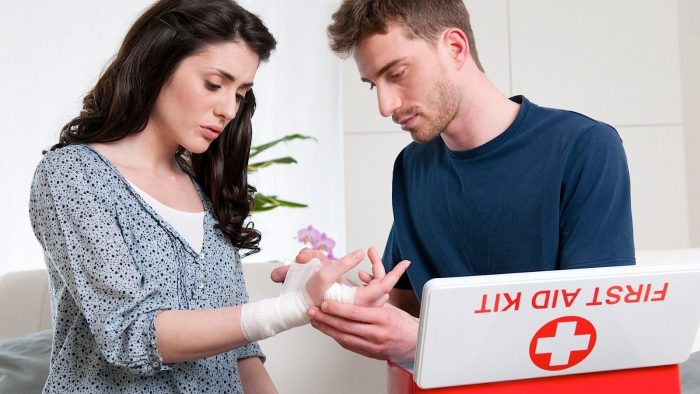*Editor’s Note: Elephant is not your doctor or hospital. Our lawyers would say “this web site is not designed to, and should not be construed to provide medical advice, professional diagnosis, opinion, or treatment to you or any other individual, and is not intended as a substitute for medical or professional care and treatment. Always consult a health professional before trying out new home therapies or changing your diet.” But we can’t afford lawyers, and you knew all that. ~ Ed.
Bleeding caused by cuts and wounds are usually minor in nature but sometimes impose serious threats.
This happens if a large vein or artery has been injured and bleeding profusely.
To know whether the bleeding injury is severe or not, consider the following cases:
- Bleeding can’t be stopped even after applying 10 minutes of firm and steady pressure on the
wound. - If bleeding is severe and blood spurts out of the wound.
- If the wound is located in the abdomen and chest area.
- There is a suspicion of internal bleeding.
In these cases, it is best to call 000 for further medical assistance.
While waiting for the paramedics to arrive, there are things you can do to help stop the bleeding.
Remember, the priority is to slow down the bleeding or stop it effectively. Follow these basic
instructions on how to stop the bleeding.
1. Apply direct pressure to the bleeding
- Put on protective gloves first, if available. Open wounds have a high risk of developing
infection and wearing gloves is recommended for infection control. - Using a sterile dressing or a clean cloth, apply direct and firm pressure to the wounded
area. If bleeding persists, apply a further dressing. - Secure the dressing using a bandage to maintain pressure on the wound.
2. Elevate the wound
If the wound is on the limb, arm, or leg area, raise it in a supported position to reduce the blood
flow. You could also apply an arm sling or elevation sling to elevate the site injury.
3. Embedded Foreign Object in the Wound
If in case a foreign object is embedded on the wound, DO NOT pull it out. It may have damage
on the way in and may cause damage again on its way out. It may also be acting as a plug to
reduce any bleeding. Instead, apply pressure on either side of the object to build pressure
around the edges.
4. Seek medical assistance
If the injury is severe and the patient shows early signs of deteriorating – call 000 for an
ambulance as soon as possible.
While waiting for the ambulance to arrive, there are things you can do to increase the patient’s
chance of survival.
- Have the patient lie down with their legs/arms/limb slightly elevated above the heart
level - Cover them using a rug or a blanket to keep them warm
- Lose any tight clothing around their neck, chest and waist area to help them breathe
- Observe the patient closely and keep monitoring their condition until help arrives.
If the patient became unresponsive at any point, start CPR
First Aid for Bleeding Injury
The loss of blood could cause the patient to develop shock and eventually stop breathing. Therefore,
immediate intervention and application of first aid are critical in a bleeding injury.
The answer to proper bleeding control surely revolves around the quality of first aid training, focusing
on the application of skills and techniques in addition to the first aid knowledge.
First Aid Pro offers high-quality first aid training including bleeding and infection control for bleeding
cuts and wounds. Anyone who will enrol in this course should result in standard first aid practice and
promote competence and confidence when providing care.
Learn the practical skills to help save a life. Book a first aid course today.
 Share on bsky
Share on bsky






Read 0 comments and reply